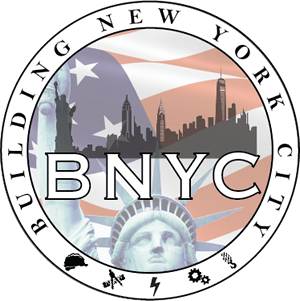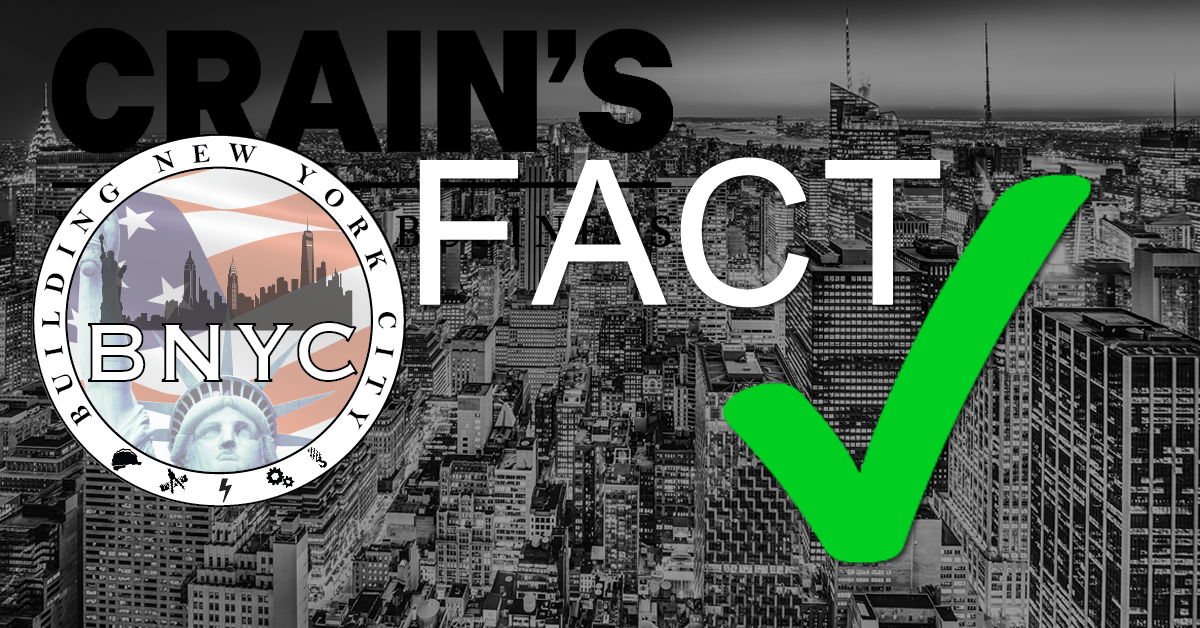From Crains New York Business:
This month, New York City’s construction unions held a $250-per-ticket reception at the midtown Hilton to honor their “commitment to opportunity and diversity.” The event followed an ad campaign launched by the city’s Building and Construction Trades Council (BCTC) to emphasize the same.
It was all part of a clever attempt to improve construction unions’ image as a monochromatic old boys’ club. But a closer look at earnings data for the city’s unions—not to mention their leadership—suggests that they have a long way to go.
There is a well-documented history in New York City of construction unions’ discrimination against nonwhite apprentices. In a 1993 report called “Building Barriers,” the city’s Commission on Human Rights reported that nonwhite union construction workers had to wait longer to graduate from lower-paid apprenticeship positions up to higher-paid journeyman opportunities. (Under state prevailing-wage laws, which tend to follow union contract ranking and pay rates, apprentices on construction jobs are paid less than journeymen, and different job classes have different pay rates.)
Today, construction unions boast that they no longer build barriers, and instead promote themselves as a beacon of opportunity for minorities in New York City. One advertisement, for instance, claims that 65% of its local apprentices are ethnic minorities. But it’s an odd statistic to highlight given what we know about apprentices’ lower pay, and begs the question of who’s getting the better-paid journeyman gigs. Census Bureau data suggest there’s a reason BCTC promotes the percentages of black and other minority members in apprenticeships: The full-pay journeymen ranks are likely a lot paler.
While the Census Bureau can’t provide us with a picture of member earnings in each union, it does give us an accurate snapshot of the hourly wage earned by unionized construction workers in New York City. They show a significant wage gap: While white workers in unionized construction make $29.44 per hour on average, black workers make $23.70. That’s almost 20% less than their white colleagues.
It is true that roughly 25% of unionized construction workers in New York City are black, which roughly matches the city overall. But that still leaves construction near the bottom of the pack in the diversity of its unionized workforce. For instance, 53% and 43% in the unionized health care and transportation sectors, respectively, are black. Even the retail and food-service industries, which other labor groups have taken to criticizing as discriminatory, look better by comparison.
If the construction unions want to improve their “male, pale, and stale” reputation—to borrow a phrase used by former SEIU President Andy Stern—they could start by diversifying their ranks at the top. The 21 executive board members of the BCTC fit the male-pale-stale description to a tee. The Center for Union Facts, an organization that I manage, placed a full-page advertisement in a New York tabloid recently to make this point. In its response, the BCTC tried to change the subject.
No one’s perfect, but the construction unions open themselves up to charges of hypocrisy when their leadership uses terms like “indentured servants” to describe nonunion competitors while hiding their own racial pay gap. As building experts, they should understand well that people in glass houses shouldn’t throw stones.
Read more From Crains New York Business….
This post is also available in: Spanish, Russian, Polish, Chinese (Simplified)






